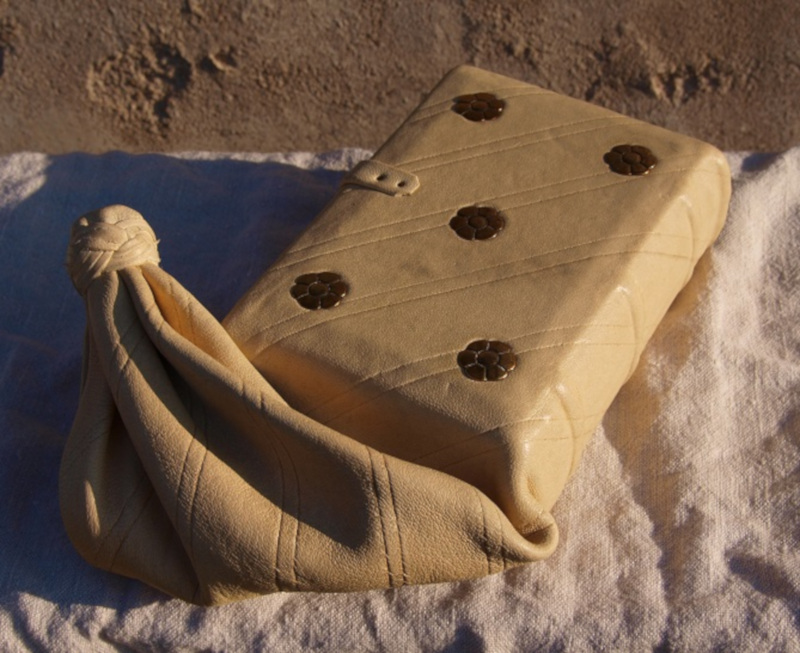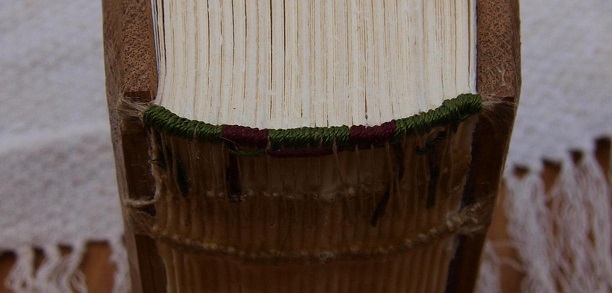Test
|
Girdle books are a special type of medieval binding where part of the leather cover extends over the wooden boards and hangs down freely from the lower part of the book when reading. The end of this cover extension is often gathered by a Turk’s head knot which could be tucked under ones belt to carry the book around and still have ones hands free. Besides rather plain prayer books for the lower clergy and merchants account books this type of binding was also in use in a more elaborate form for Books of Hours for well-to-do persons. Detail of St. Gertrud's altar, Lübeck |
|
|
The inner construction of the book is no different from that on a "normal" medieval one without the cover extentions. Some girdle books even had a standart binding with leather covered boards under the girdle book cover! This may be a result of a later rebinding of a finished book. But ecspecially for girdle books with a delicate textile cover this is very useful - if the textile fades or wears out, there still is the sturdy leather cover underneath to protect the book.
extant girdle book from Denmark, 15th century |
Our girdle book replica has 18 quires or sections of plain handmade paper and is bound on three raised bands, the hemp cords the sections are sewn onto. The ends of the cords were frayed so they lie flat when pasted to the oak boards. At the ends of the spine are additional cords called headbands. Those were sewn onto the spine ends after sewing the sections to the raised bands.
The headbands are used for different purposes. On some books, the leather cover is sewn to them to fix it and to protect the spine from dirt. The headbands can also be a decoration AND a protection for the book, when headband and leather cover are fixed together not with plain sewing but with one or more strips of leather braided over the headband and through the leather of the cover.
For a girdle book, this does not work, so we took the next option: The headband are wrapped with thread before the boards are covered with leather. Here, silk thread was used for the headbands instead of the more common red and white linnen thread.
Surviving examples often miss the headband wrapping or it is rather damaged. If still intact, they often show a very asymmetrical arrangement of colours or are just executed in one colour. When you look at medieval books, precision to the millimeter seemes to be a concept totally strange to the medieval bookbinder...

The leather used for the cover is a very smooth, cream coloured sheeps leather tanned with oxalic acid.
Blindtooling for decoration is normally executed after attaching the leather to the boards - but in this case had to be done first. The parallel lines were drawn with a heated blunt knive. Afterwards, the leather was glued to the wooden boards with animal glue to prevent is from stretching and thus the lines from getting crooked.

On the top and on the sides of the boards the leather was folded around the edges and glued to the inside of the boards. Extant leather on the corner was cut away and the edges were additionaly secured by sewing. At the top of the back the leather was folded inside and glued in place so the silk wrapped headband is visible.
Five little cast flowers were riveted to the boards as both decoration and protection for the leather surface. The clasp was attached with little rivets and the top of the loose leather was gathered with a Turk's head knot.






